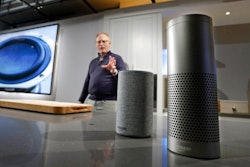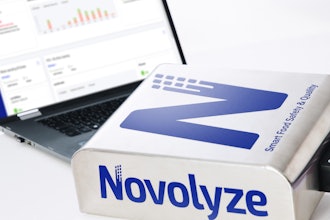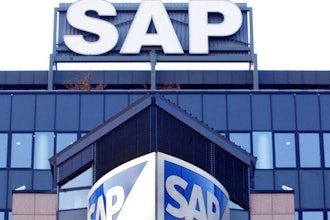
 Gavin Davidson
Gavin DavidsonChange is cascading throughout manufacturing at unprecedented speed. Amid this disruption, it’s no longer simply about survival of the fittest. It’s about survival of the fastest and most flexible — those that can surf atop the waves of change, rather than be drowned by them.
Technology is the catalyst behind manufacturing’s ongoing transformation. Cloud technology, in particular, is proving essential for manufacturers seeking to eliminate old barriers and seize new and emerging opportunities. As we segue into 2018, cloud provides the framework that will drive more technological and business innovation in five key areas:
The Blended Business Mashup
Manufacturers aren’t just manufacturers anymore. The old-school model is disappearing. In 2018, we’ll see more manufacturers become omnichannel retailers and service providers. More will take on the role of distributors, as retailers bypass traditional wholesalers and buy directly from manufacturers.
Direct-to-consumer (D2C) sales will continue to rise, both over D2C ecommerce sites and company-owned physical stores like those of Apple, Tesla and Nike. Manufacturers that succeed at D2C sales are diversifying revenue, elevating brand profile, building consumer intimacy and cutting out middlemen costs.
We’ll also see more B2B and industrial manufacturers expand service offerings. GE, for instance, is augmenting sales of turbines, jet engines, and medical equipment with asset management services. GE uses sensor-based IoT data and analytics to help customers better manage operational efficiency and maintenance.
For manufacturers, these blended business mashups can be risky. Many manufacturers lack the expertise and systems to support functions such as merchandising, ecommerce, marketing, logistics, and service delivery. From the technology perspective, a unified cloud platform that integrates easily with third-party apps is a big advantage in capturing new opportunities with minimal overhead.
Collaboration in the Internet of People
IoT is all the rage. But what about the Internet of People? The full spectrum of stakeholders — customers, partners, and employees — is fast emerging as a priority for manufacturers. Cloud, mobile, analytics, and social technologies are opening new avenues to enhance not just the customer experience, but the overall stakeholder experience.
The customer experience remains vitally important, but it’s taking on new dimensions. For instance, IDC predicts that by 2019, 50 percent of manufacturers will use cloud-based crowdsourcing to collaborate with customers on improved product designs. Similar collaboration with partners yields ideas to optimize supply chain efficiency.
More manufacturers will look to technology to improve productivity and meet expectations for a seamless work experience among tech-savvy millennial employees. Manufacturers without mobile-friendly, cloud-based systems on par with top social and consumer websites risk jeopardizing the customer satisfaction and retention among digital natives.
And manufacturers will take advantage of the cloud for collaborative, 24/7 global operations. Epec Engineered Technologies, for example, has dramatically improved productivity with a shared platform for design, engineering and production personnel across North America, Europe and Asia. Epec’s model means greater efficiency while eliminating lag time that frustrates employees.
Data-Driven Intelligence With Analytics
Many manufacturers have flirted with predictive analytics in recent years with mixed results. In 2018, we’ll see a large uptick in analytic capacity as manufacturers capitalize on advanced data capture and algorithms for analytics on data that’s growing rapidly in volume, variety and velocity.
Done right, analytics yields insights to improve every aspect of manufacturing, from engineering and design to production, machine utilization, workforce productivity, supplier performance and demand forecasting. It can mean better products, lower costs and faster time to market.
IoT data from sensors in plant equipment, distribution frameworks and end products is one high-impact area. So is information captured from suppliers and logistics providers, equipping manufacturers to apply analytics that can identify hard-to-spot weaknesses and forecast future results.
The convergence of cloud platforms, integration technology and analytic tools is, at last, turning the promise of data-driven insights into reality. And, we’ll also see widening gaps between manufacturers that stick with the status quo of haphazard reporting and those that embrace modern, real-time cloud systems and predictive analytics.
Omnichain: What’s Next in Supply Chain Optimization
Supply chain optimization is hardly a new idea, but it’s poised for a quantum leap in 2018 driven by technology. More manufacturers will embrace the “omnichain” — a cloud model that unifies internal and external processes across extended networks.
Omnichains encompass all supply chain processes, from an internal plant floor to a network of third-party partners. It makes real-time data available to all authorized stakeholders. The result: On-demand visibility across many moving parts. Better flexibility to adapt to disruptions. Tighter controls and exceptional speed of execution.
Those transformative benefits simply aren’t possible with yesteryear’s technology, but they’re now within reach as cloud becomes the de facto computing infrastructure for manufacturers.
Future-Proof Flexibility
Manufacturers know all too well that the pace of change is accelerating. IoT was a twinkle in the eye a few years ago, but it’s suddenly a very real phenomenon that’s rewriting the rules of high-performance manufacturing.
So, what’s next — and how quickly does it move from the back of the proverbial napkin to game-changing innovation? Blockchain technology, the foundation behind Bitcoin, stands to improve traceability and compliance with a shared ledger across supply chain networks. It’s already in initial prototyping and deployment phases among early adopters. Artificial intelligence (AI) is growing rapidly in consumer and industrial applications. Cognitive computing, virtual reality and Blockchain hold significant promise for manufacturing. Whatever you see on the horizon, manufacturers can’t afford to play wait, see and then catch up with emerging technologies.
What’s needed is future-proof flexibility in a cloud-based IT environment that lets an organization quickly experiment with new technologies, and deploy them into production if value is there. Without that speed and agility, laggard manufacturers will watch in dismay as a fast-forward future passes them by.
Gavin Davidson is a Product Marketing Director at Oracle NetSuite.






















